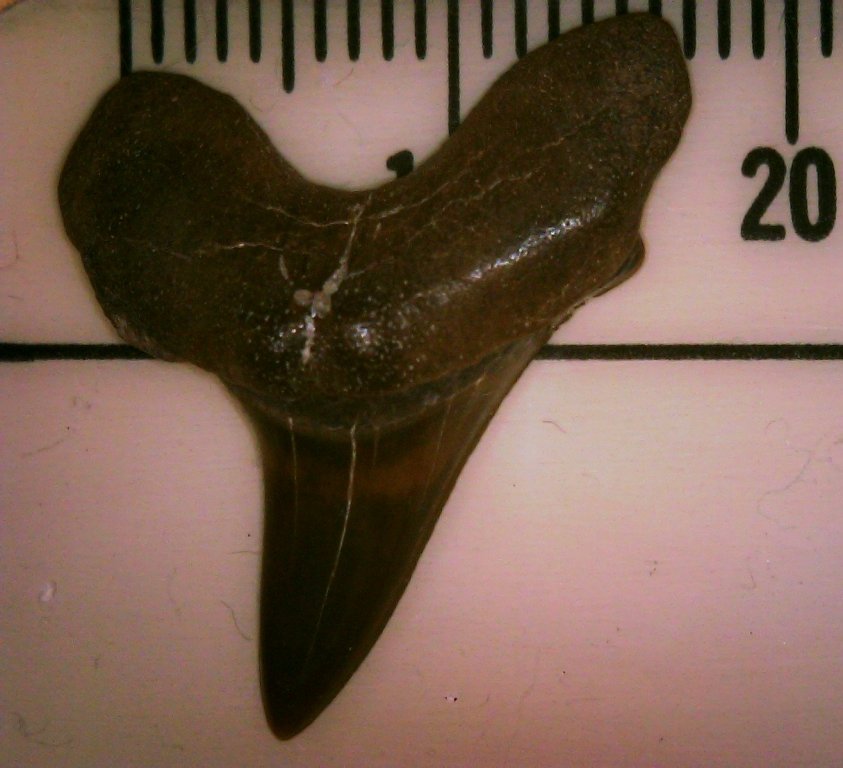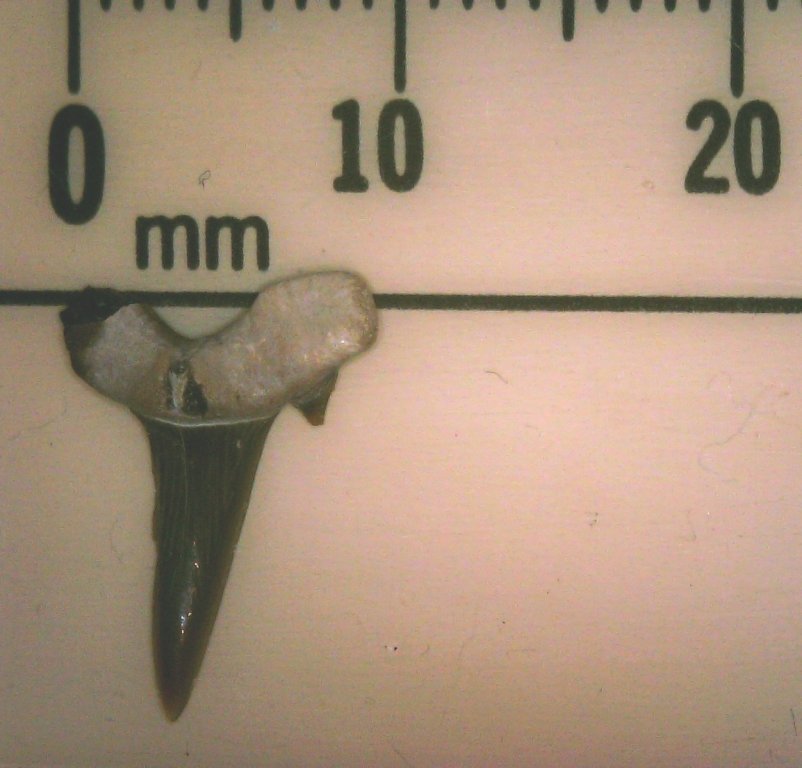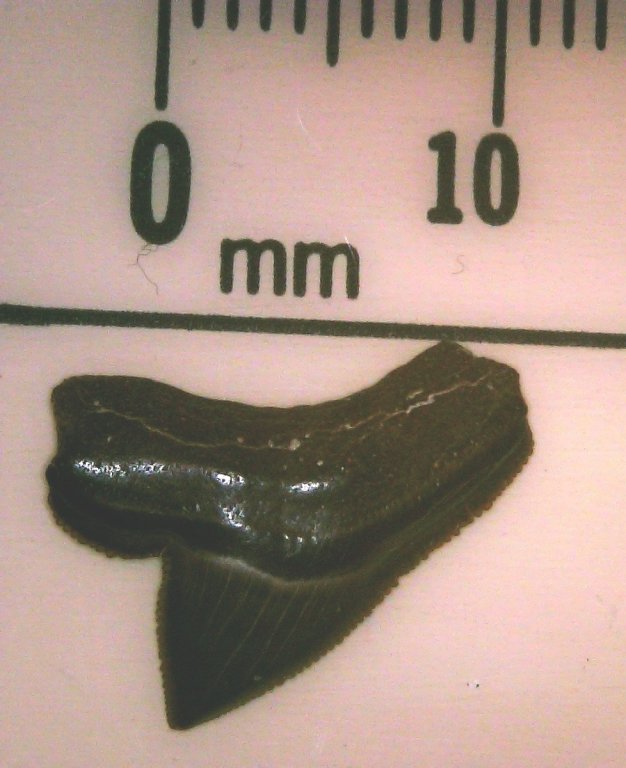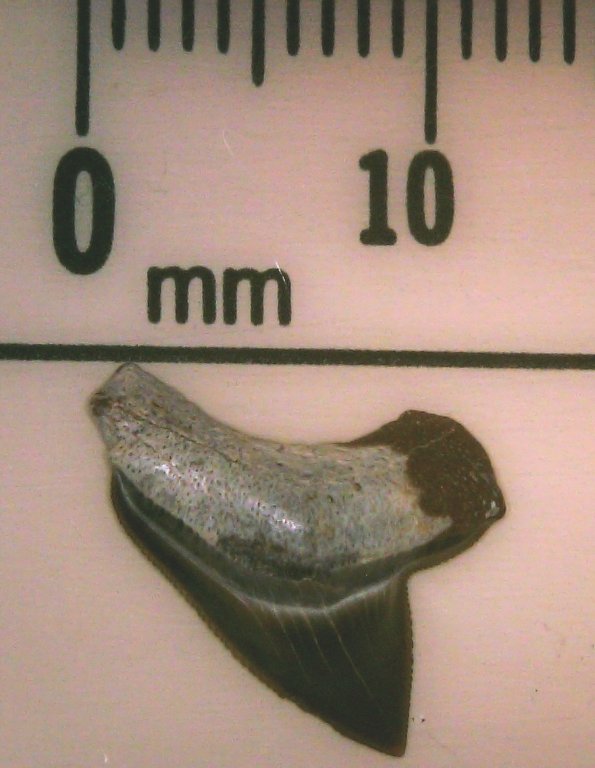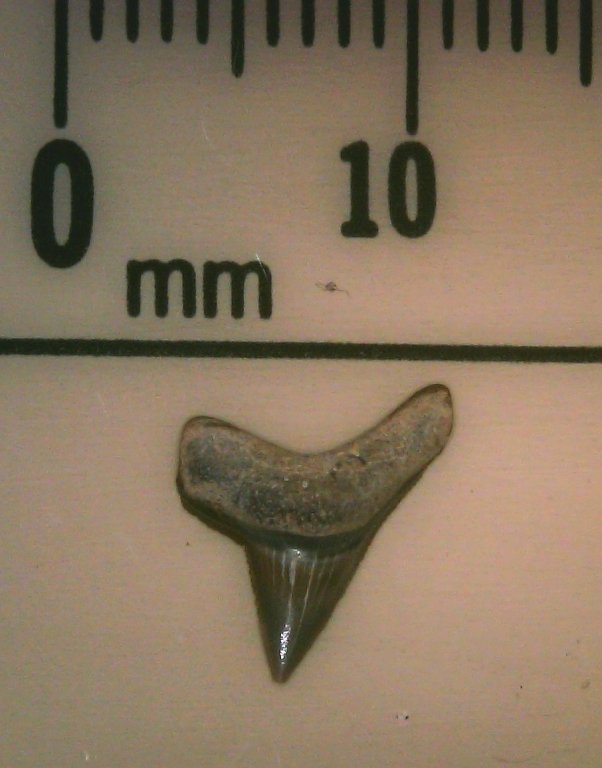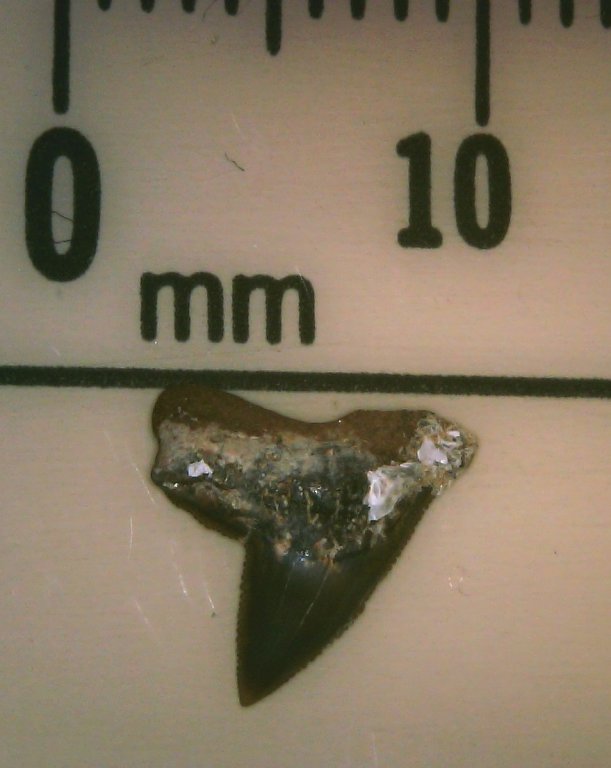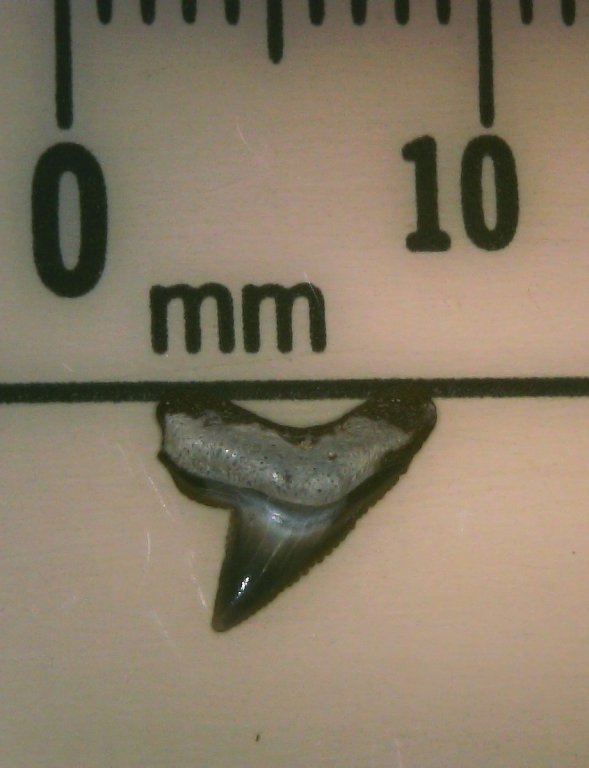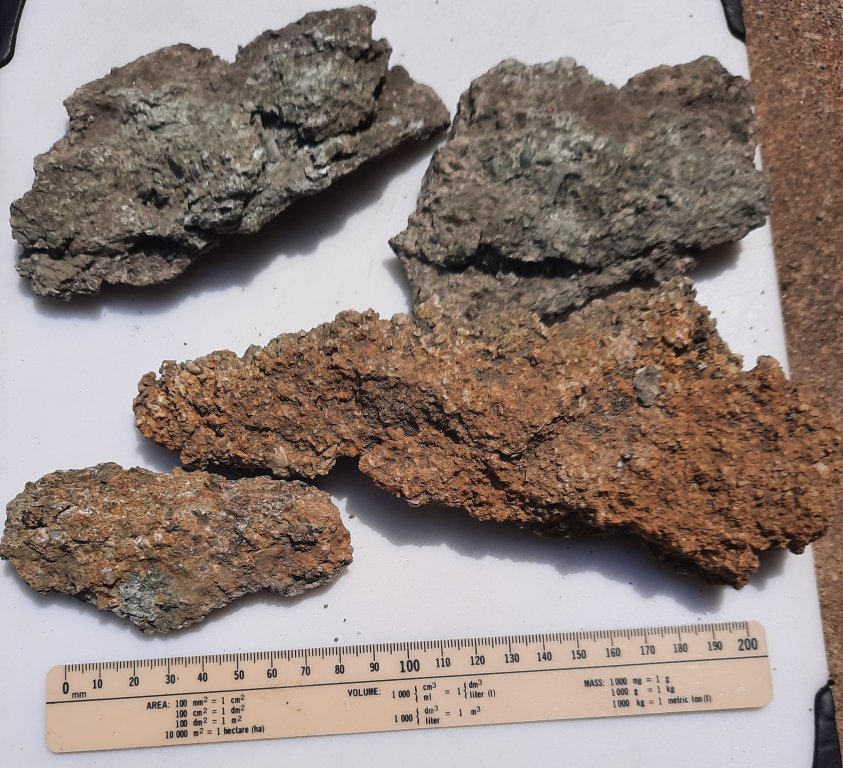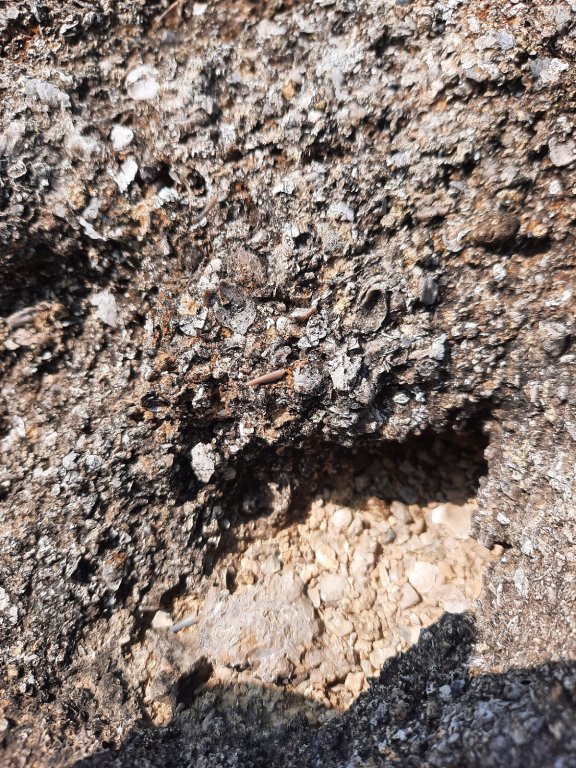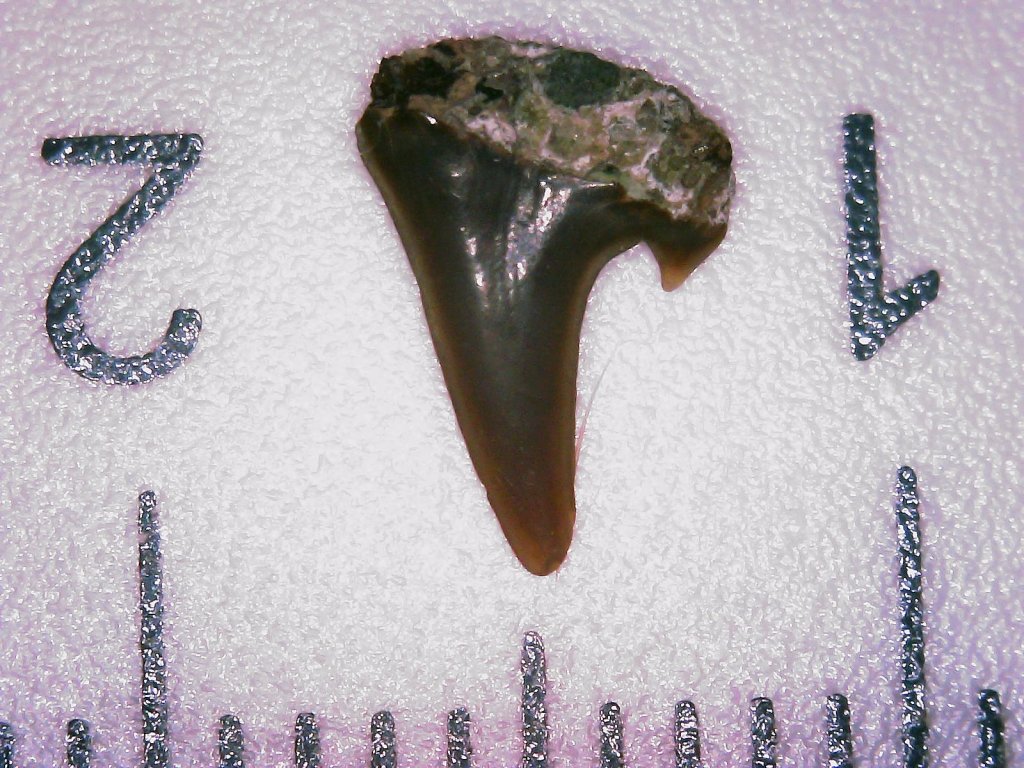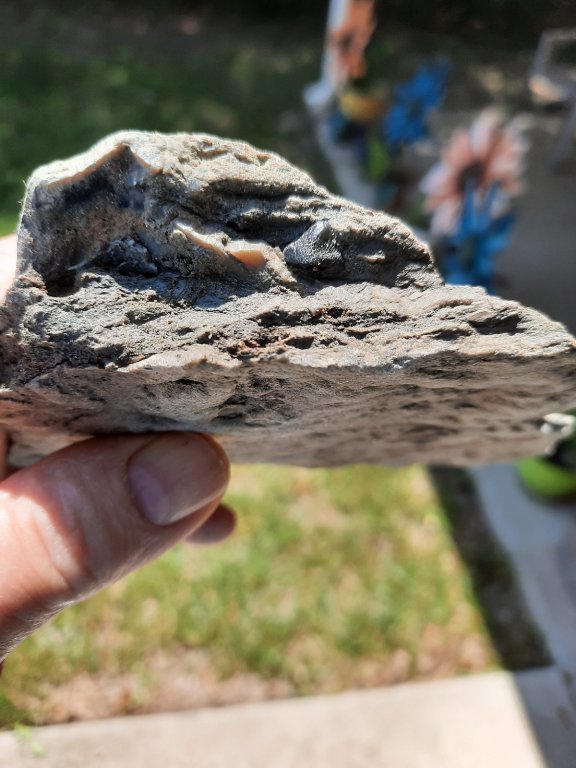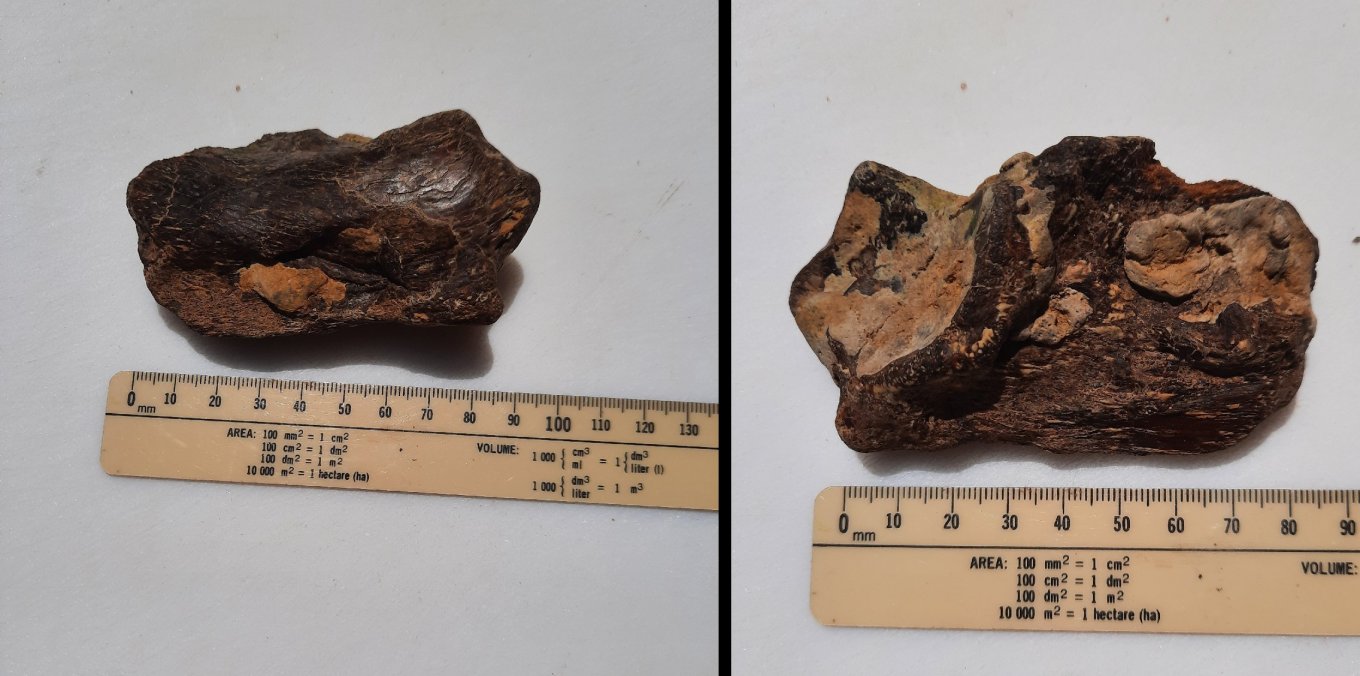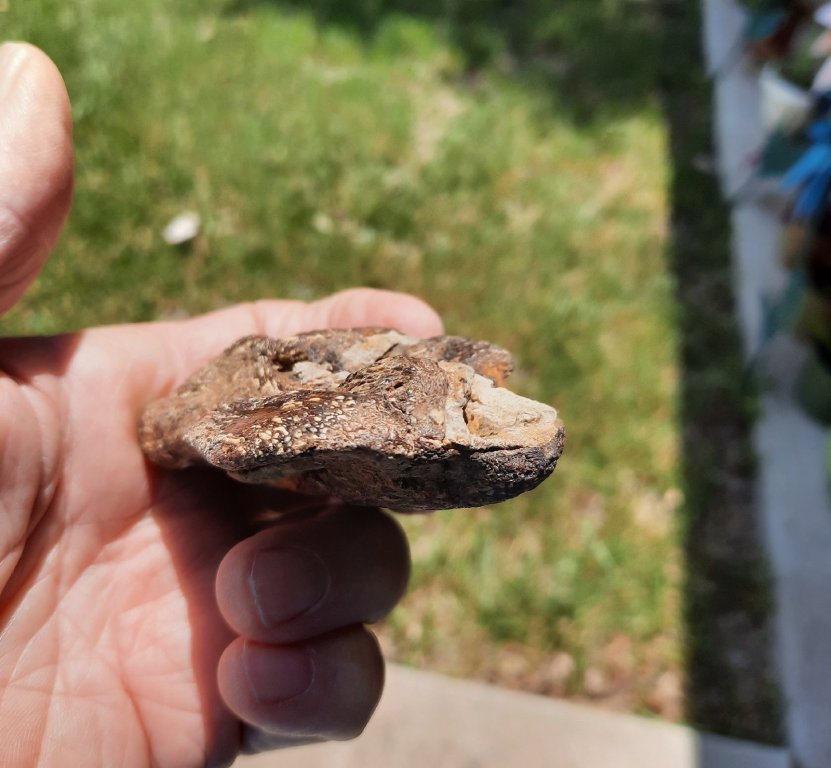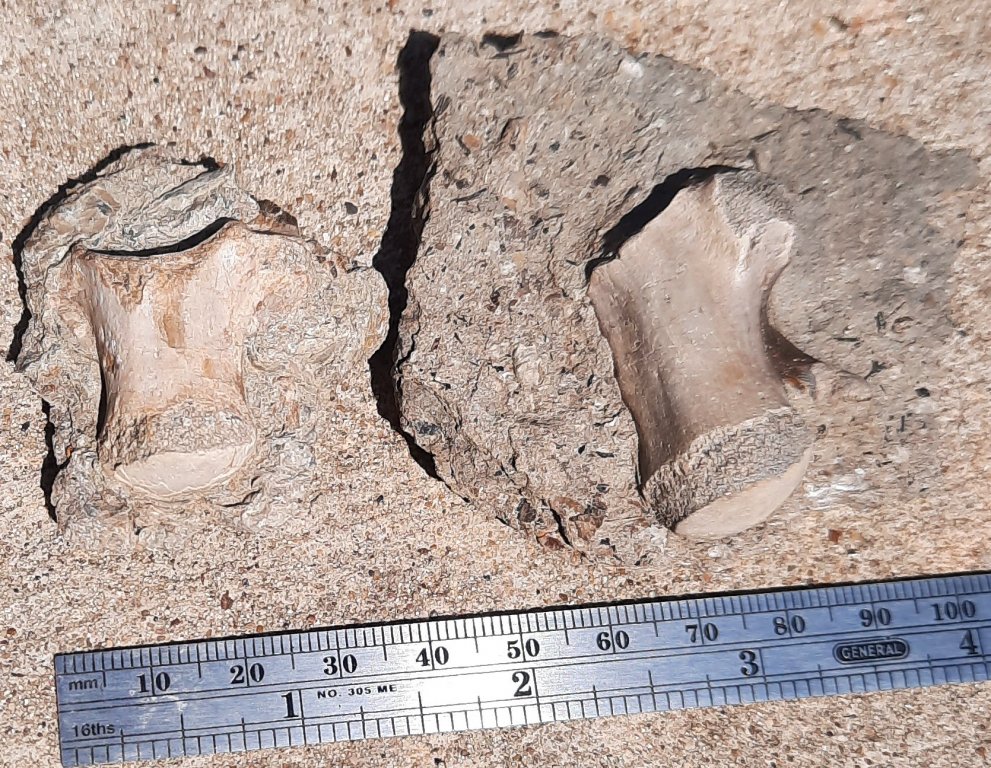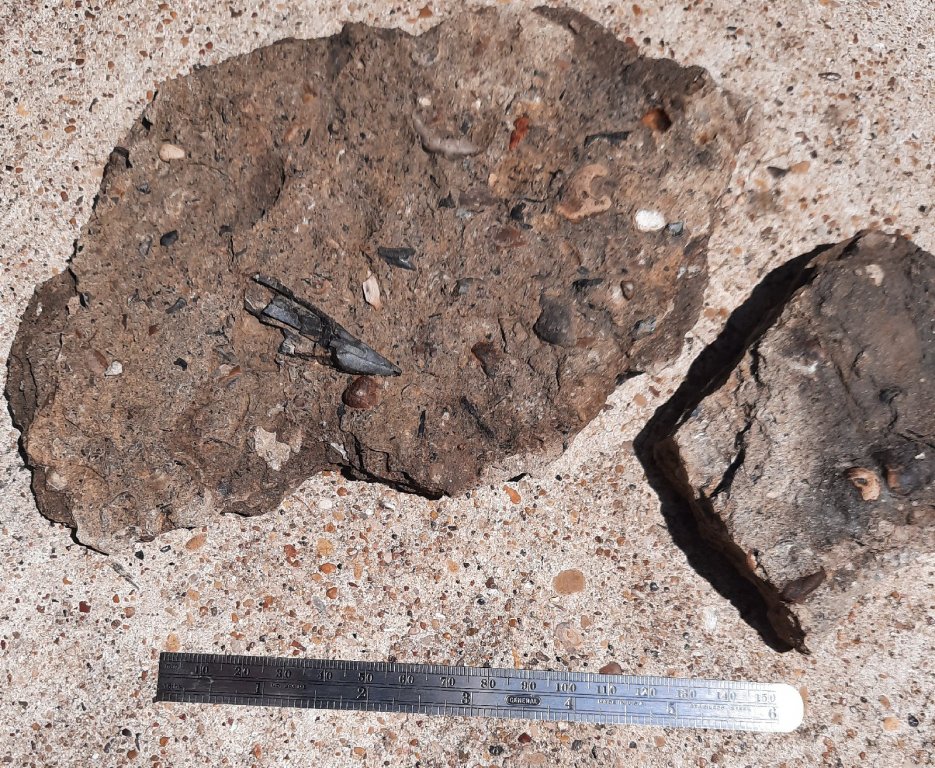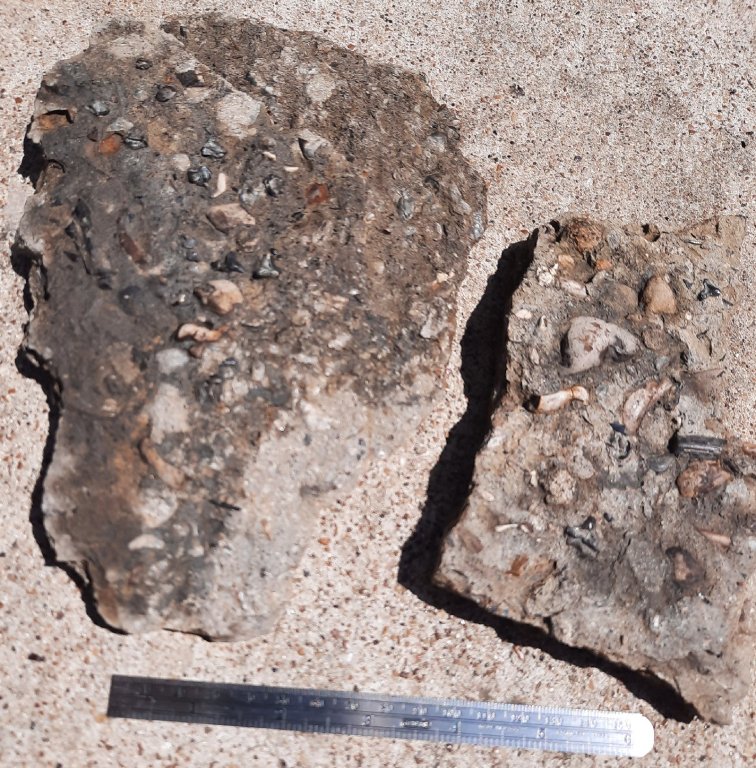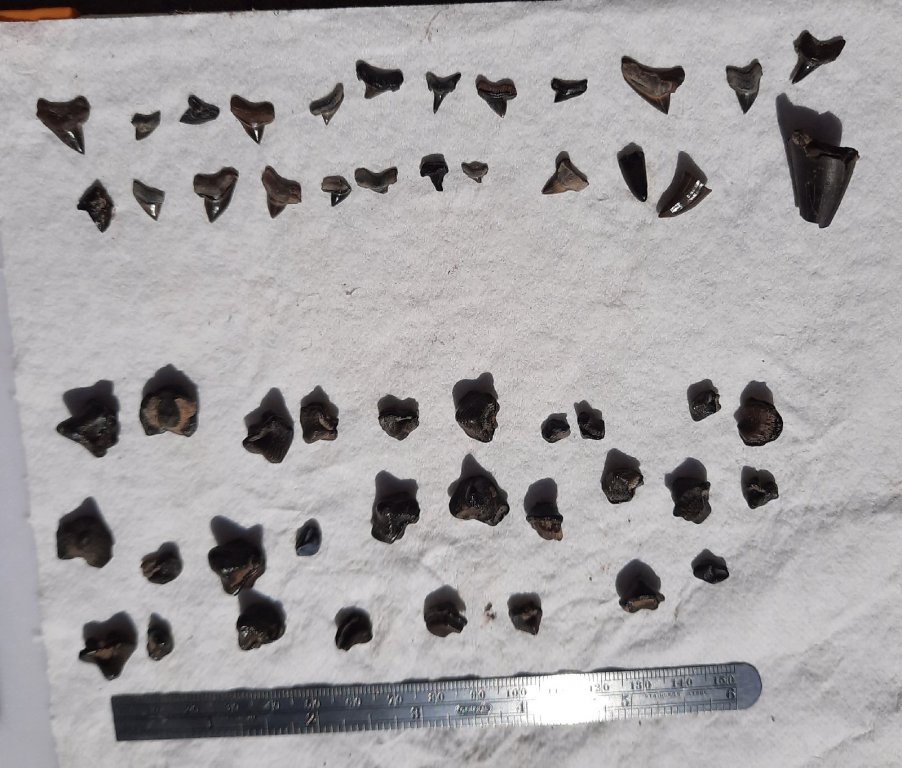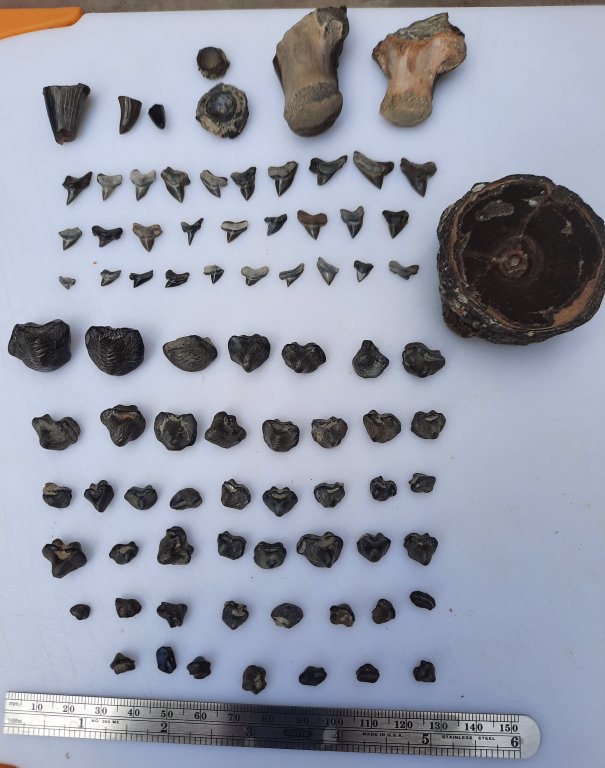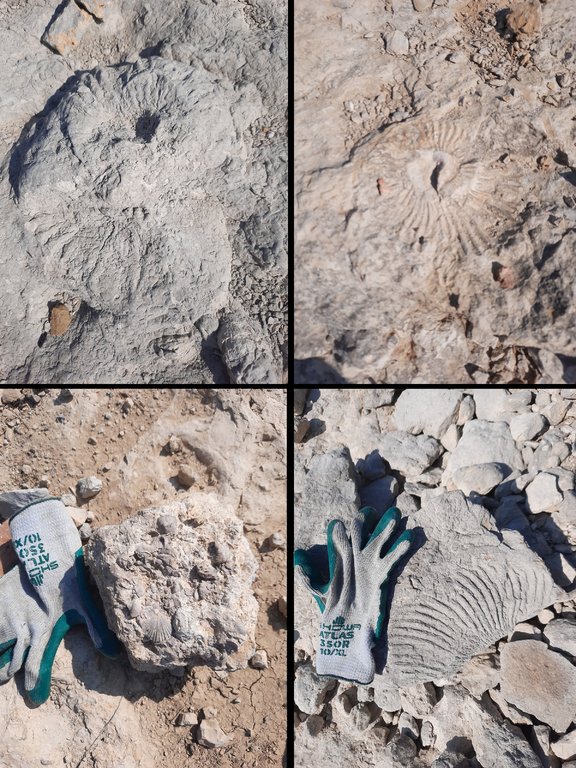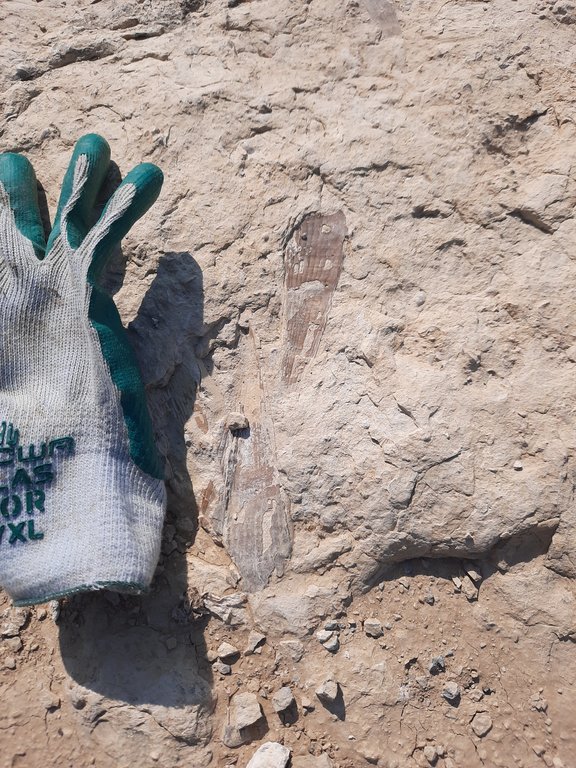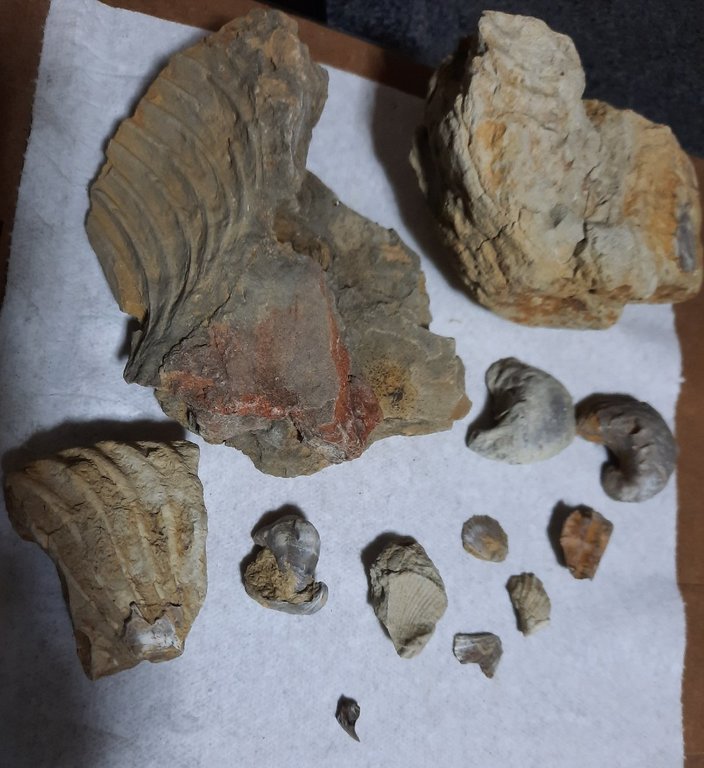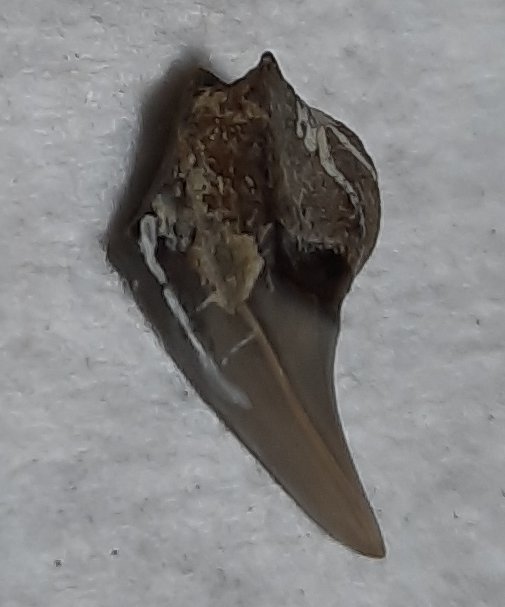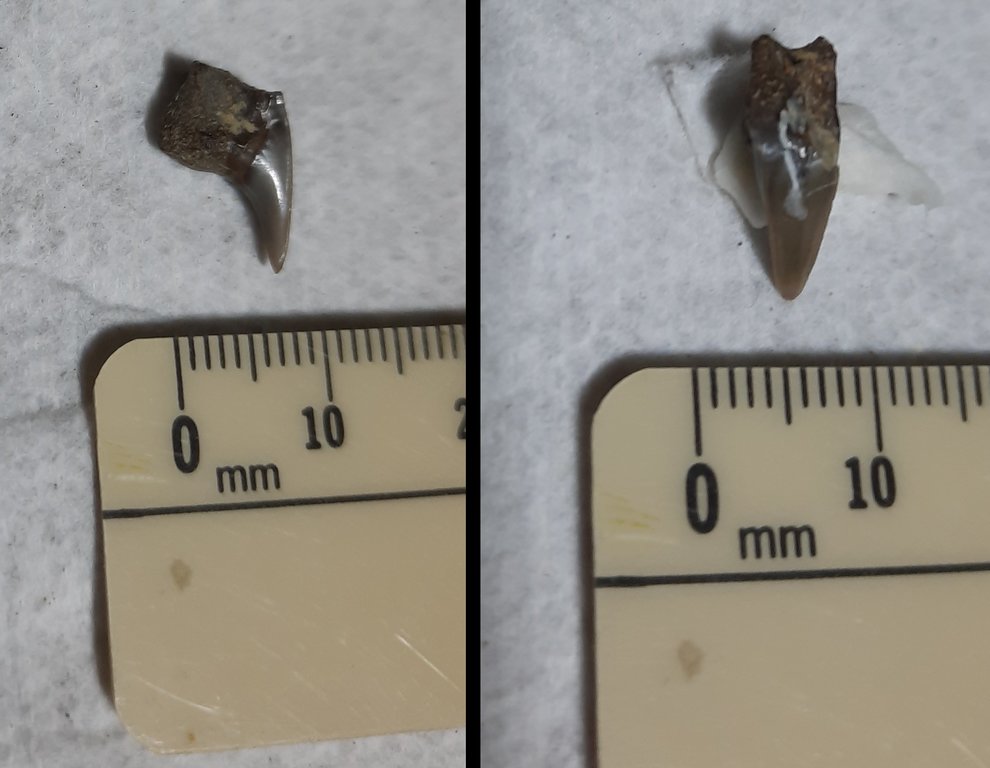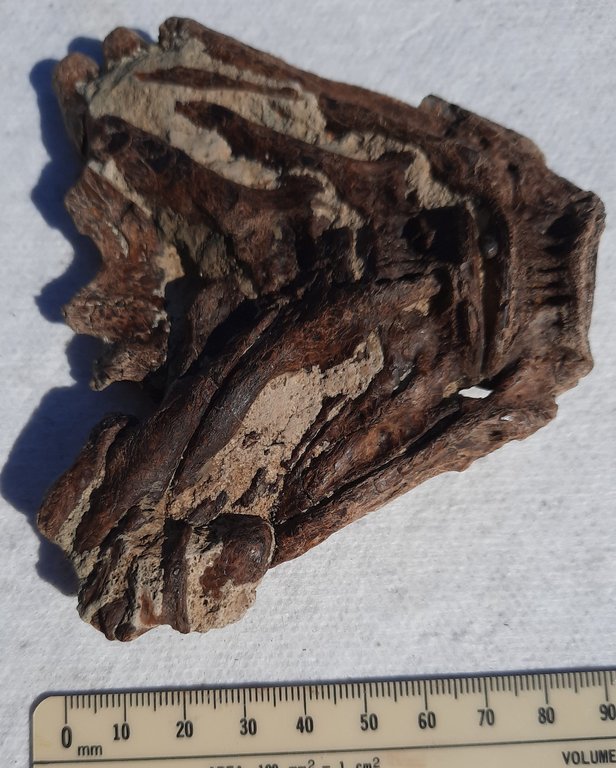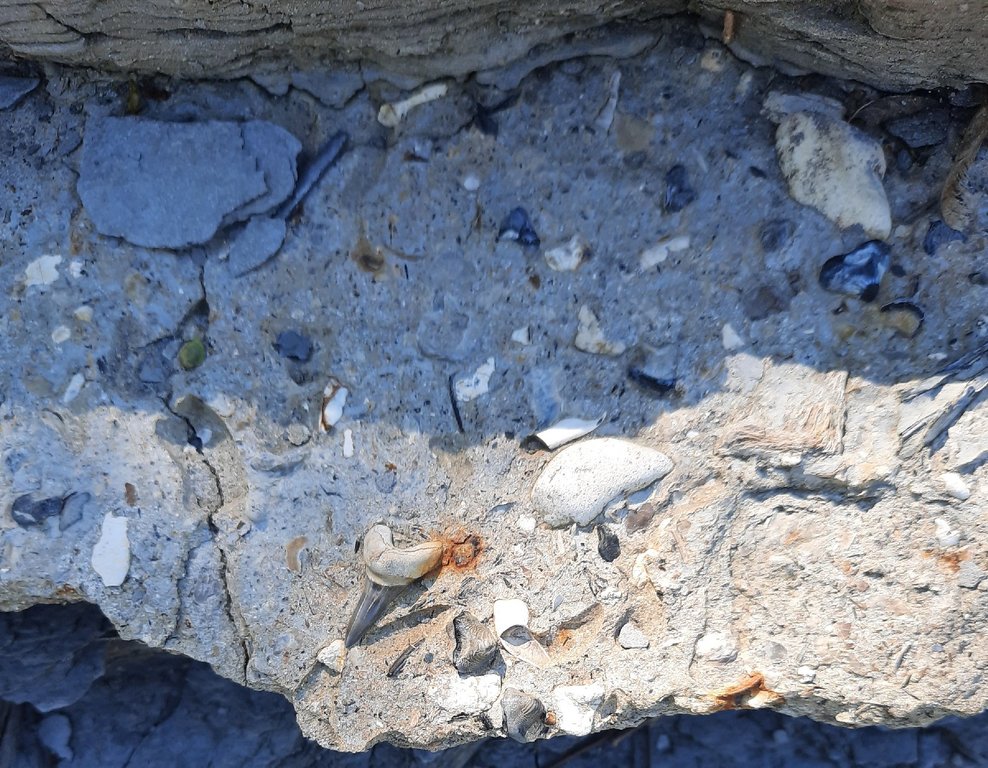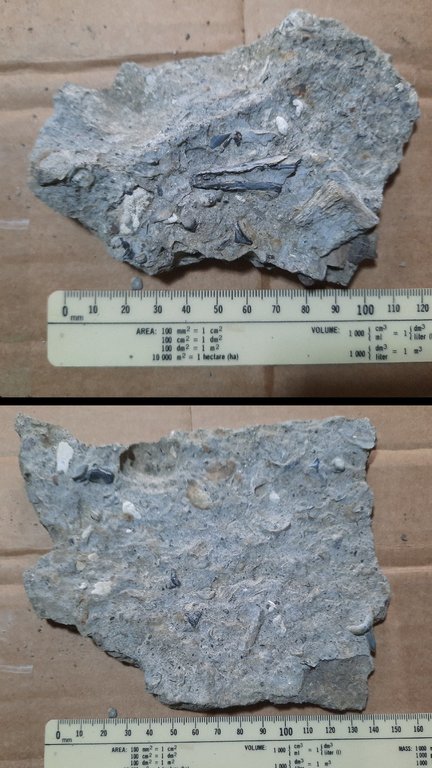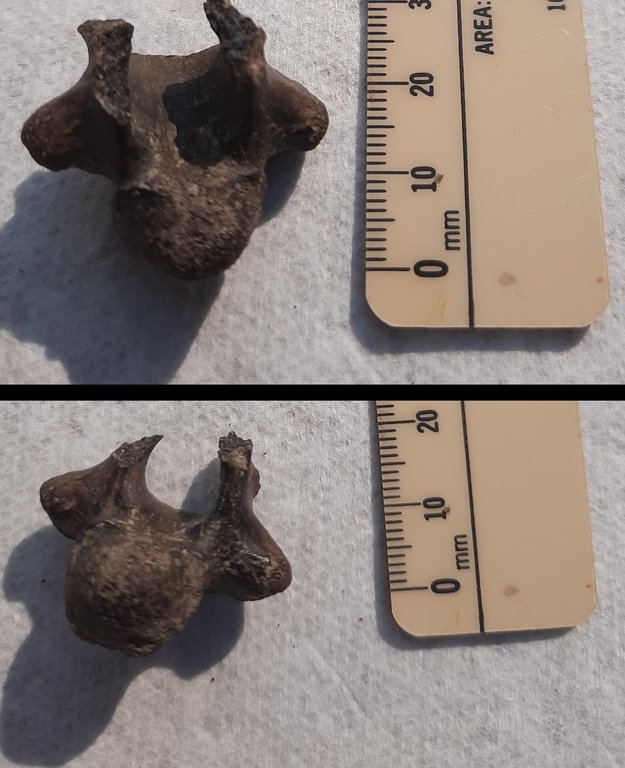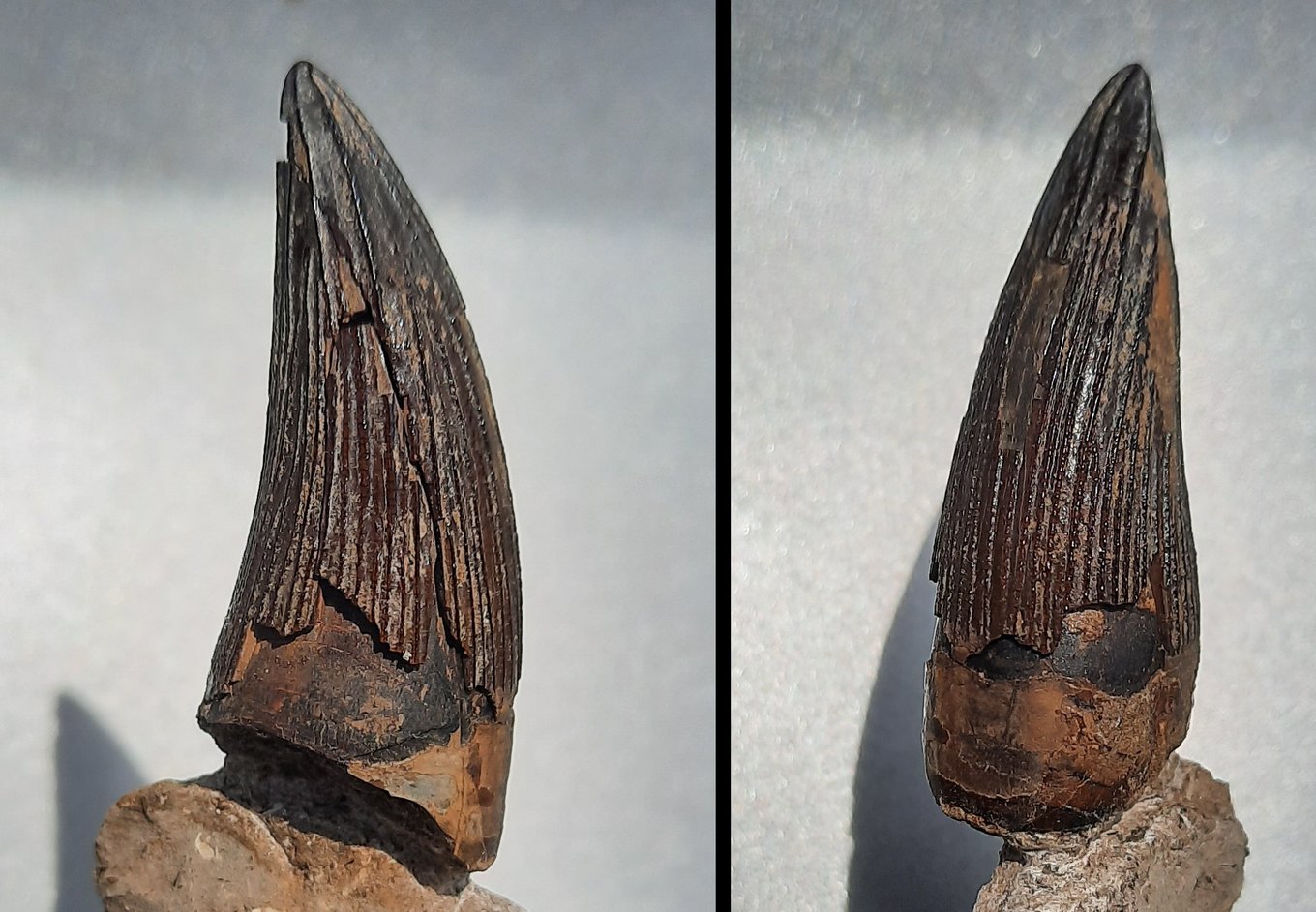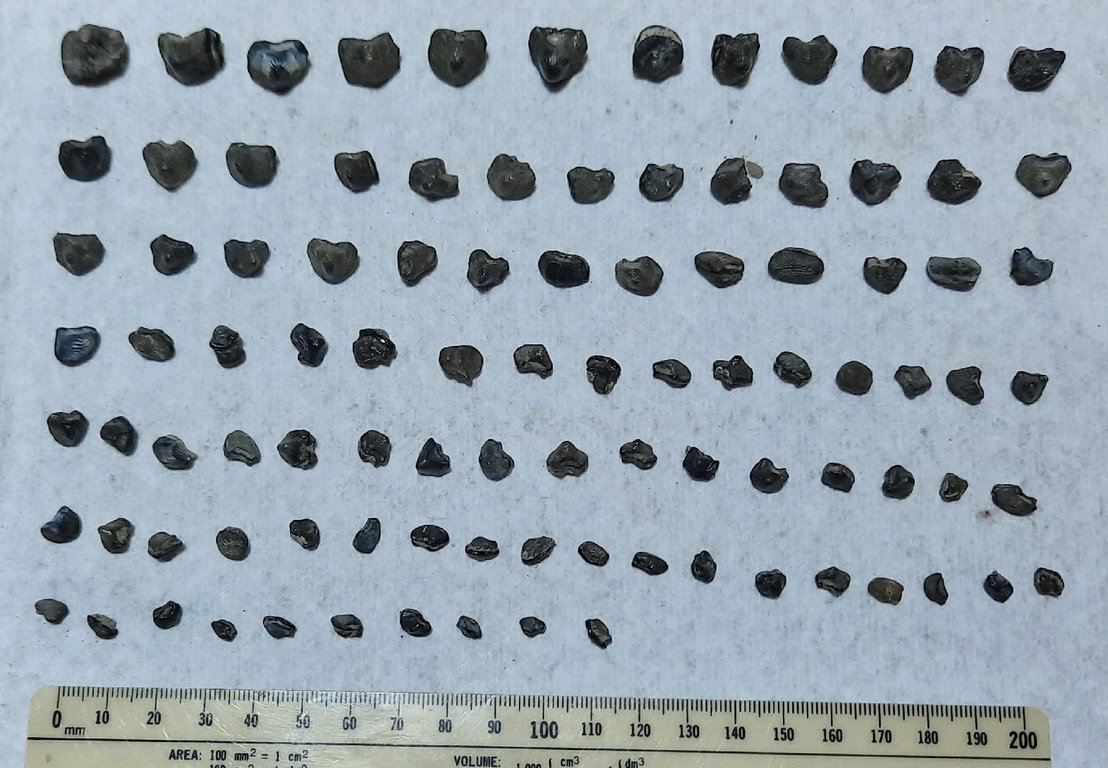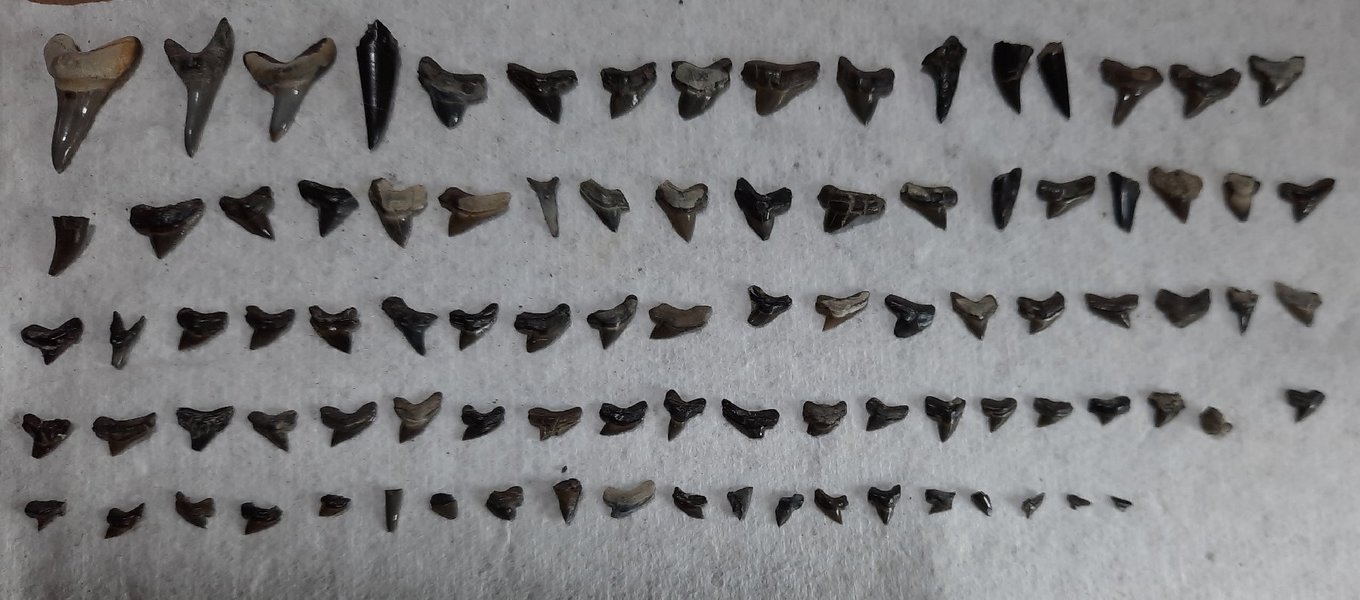Tuesday morning, I made a fossil hunting trip back to the Ellis County creek where I’ve found so many teeth. I had been making a short hike across the pastures of two land owners to get to this creek, but the last time I asked permission, one of the land owners refused me, saying he had made a deal to give exclusive rights to another fossil hunting family. I can still get to the creek, but now it’s a very long hike for me. So, I waited until the hottest part of summer was gone to try that long hike.
When I reached the small section of the creek where I’d been finding most of the teeth, this is what I saw. Click the photos to be able to zoom in and get a closer look.

There was about a 35 foot long stretch where the matrix had been dug into rubble like this. I’ve always made it a practice to not chisel out more matrix than what I can thoroughly go through right then, or take home in my backpack. Obviously, that’s not the technique of the fossil hunters I share the creek with. I didn’t see how this much matrix could have been looked at thoroughly even in a couple of days, so I just started the day by looking at what they had dug up, and wondering if they left anything. I had my answer pretty quickly, when I spotted this.

Those two teeth were sizeable enough that I knew that if they hadn’t been spotted by the previous hunters, there would be plenty to be found in the rubble, and whatever I left would all be washed away in the next major rain, so I spent much of my time in the creek going through the rubble. But this was the lowest I’d ever seen the water level in the creek. There was no flow at all. So, I left myself a couple of hours to explore the gravel bars, and check further down the creek than I’d been before. It wasn’t the kind of easy pickings I’d had in the creek in previous trips, but I still found plenty to keep me entertained. It took me a couple of days to get through all the matrix I brought home, and as always with this creek, I was amazed at the number of small Ptychodus teeth I found in matrix that I brought home for other reasons. Here are the teeth I brought home. Most were retrieved from matrix.
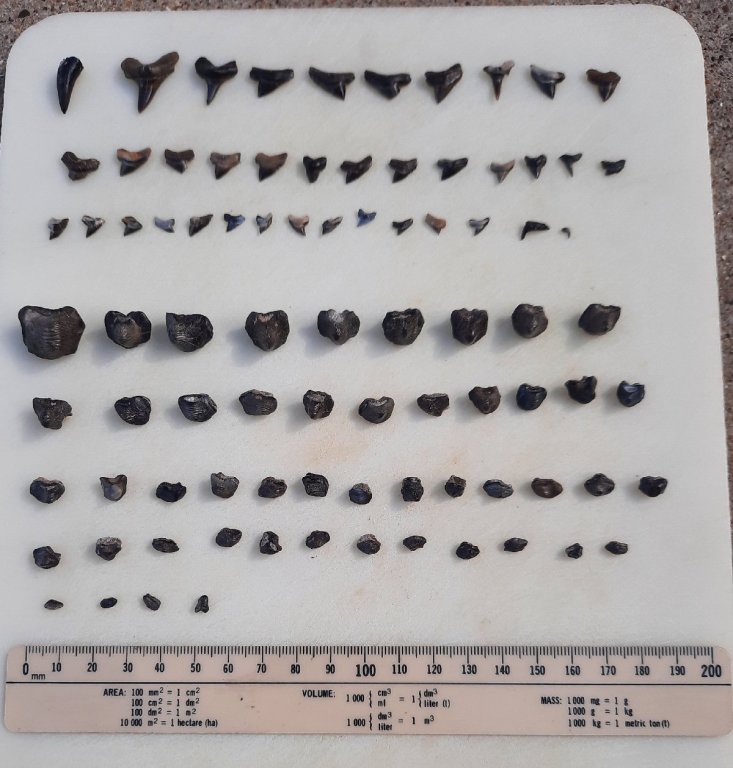
The matrix from this creek is usually very hard. Some of it has to be soaked in vinegar to manage to pick anything out of it. There are micro teeth to be found among the other teeth, but they are almost always broken, and very hard to remove from this matrix at all. I brought this matrix home for the tooth you can see on the right, but notice the two micro teeth on the left.
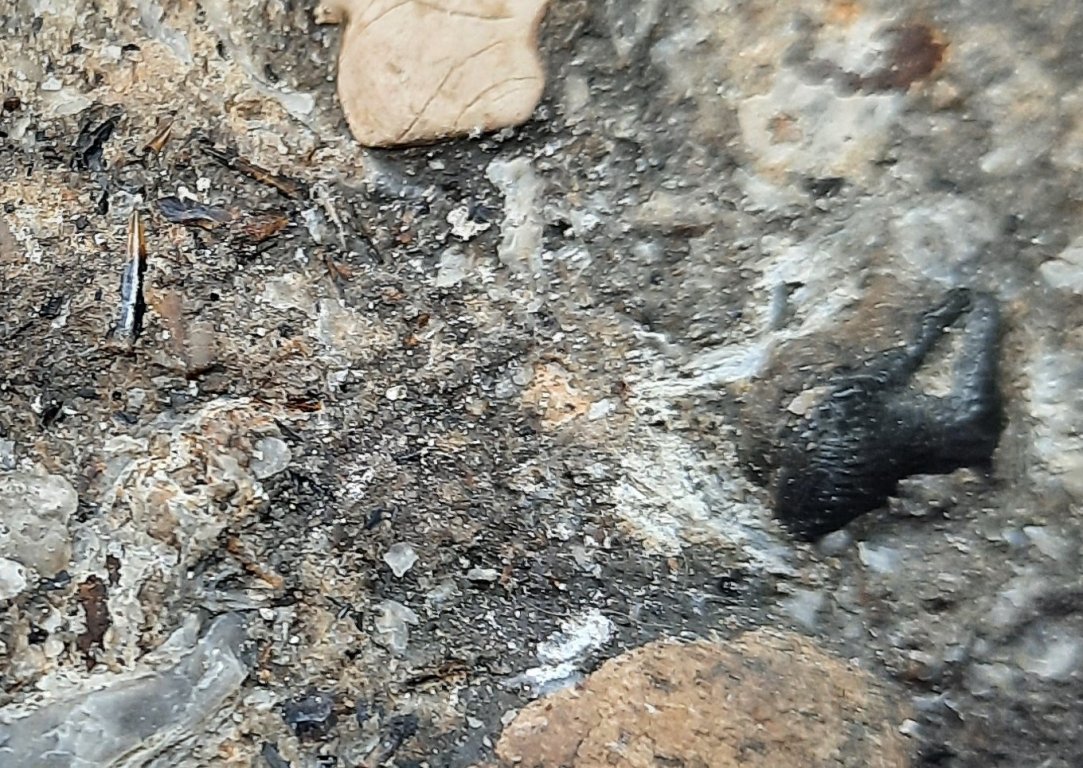
Here are some individual photos of some of the teeth. This first one looks like a mosasaur tooth to me.

Here are some of the nicer Ptychodus teeth. Most Ptychodus teeth I find in this creek are pretty small, but this first one is pretty nice sized.

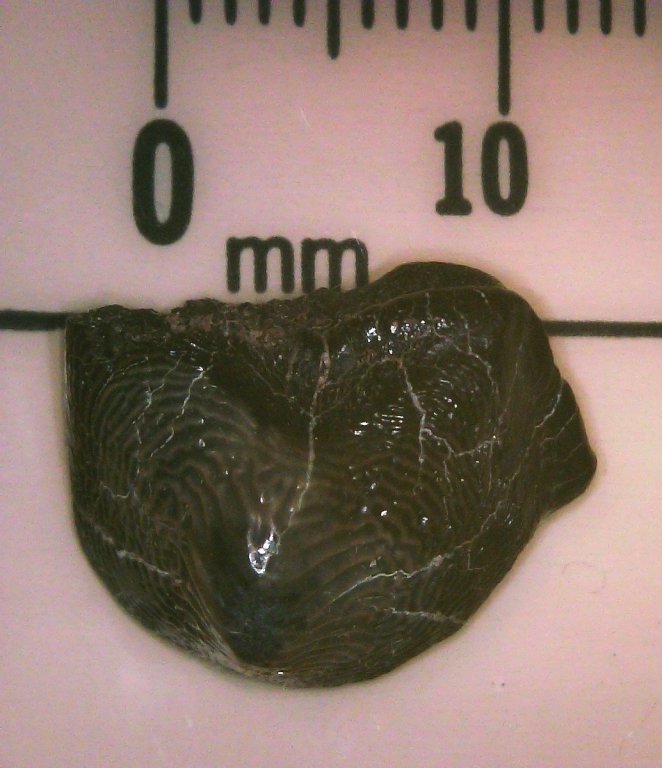
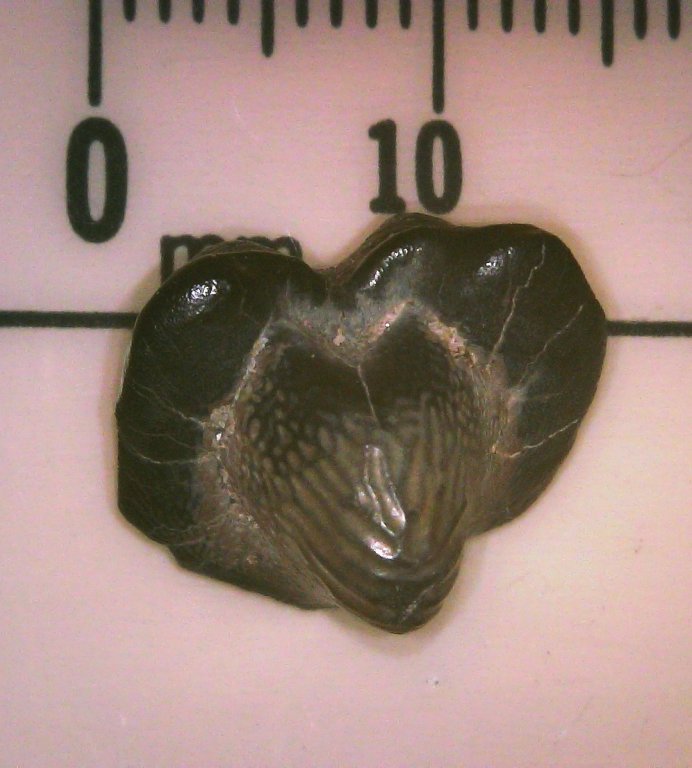

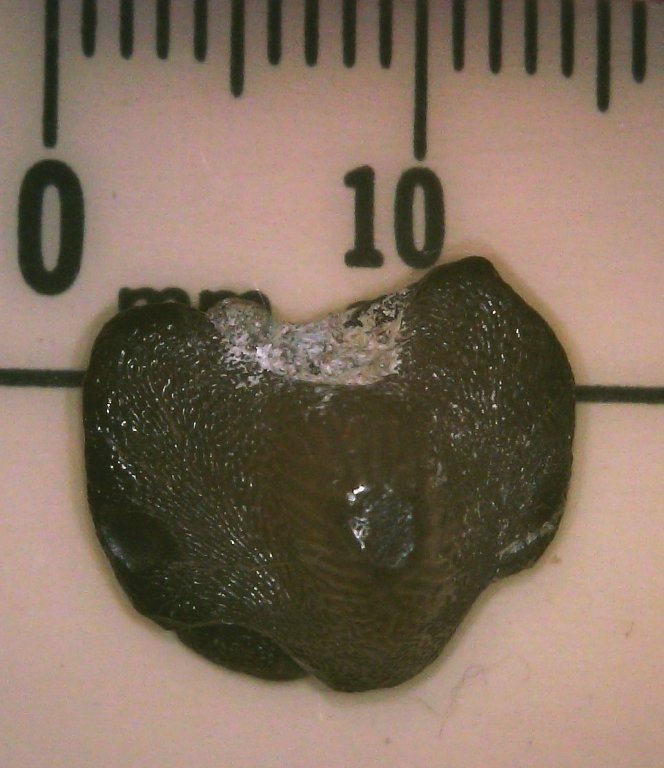
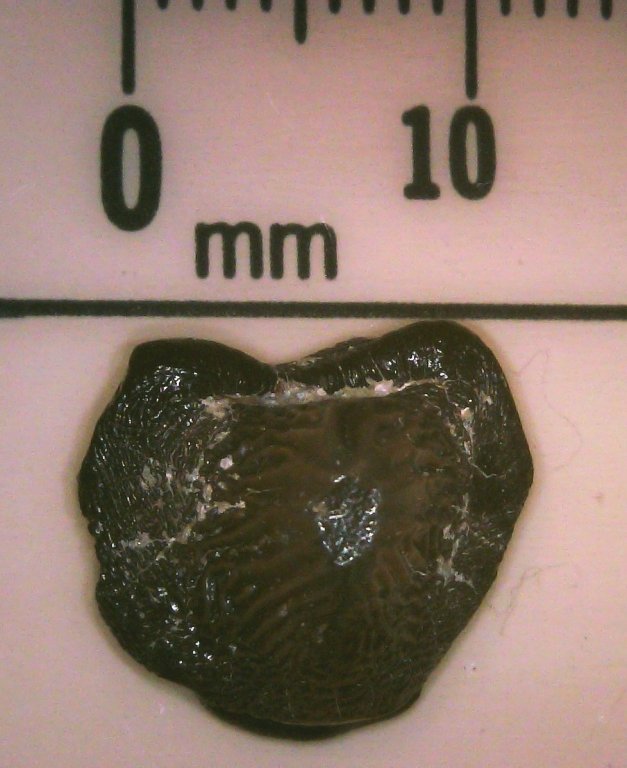

And finally, these bone bits. It’s funny how often I find bits in this same general, peculiar shape. I always think they’re teeth, but on closer exam, they look like bone bits, and they don’t usually come out of this hard matrix in one piece, since they aren’t as hard as shark teeth. Someone in The Fossil Forum thought they might be Enchodus jaw fragments.


